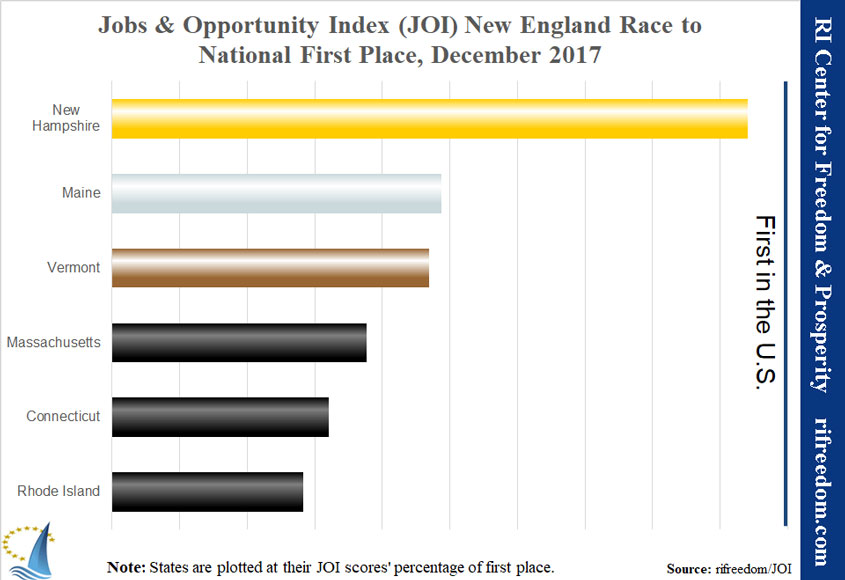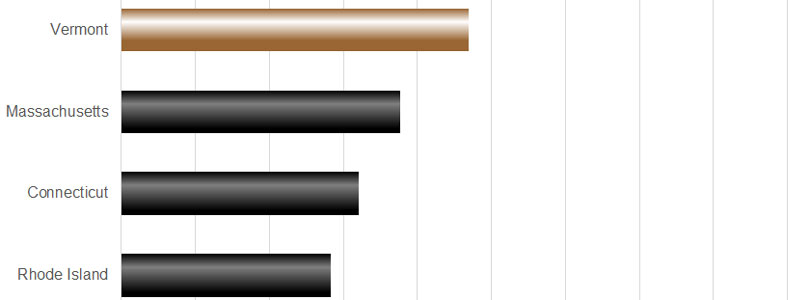December 2017 Employment: Not a Great Place Pre-Revision
Under the normal course of events, this will be the final employment report before the Bureau of Labor Statistics (BLS) does its annual revision. And under the normal course of events, Rhode Island will see its employment numbers evaporate and the apparent midyear bump evaporate. With that expectation, the initial data for December 2017 isn’t encouraging, and not just because the unemployment rate slipped a tenth of a percentage point to 4.4%.
As the following chart shows, employment continued to fall, although the shrinking labor force did hold somewhat steady in December.
[box type=”note” style=”rounded”]To Our Readers: We need your support to challenge the progressive mainstream media narrative. Your donation helps us deliver the truth to Rhode Islanders. Please give now.[/box]
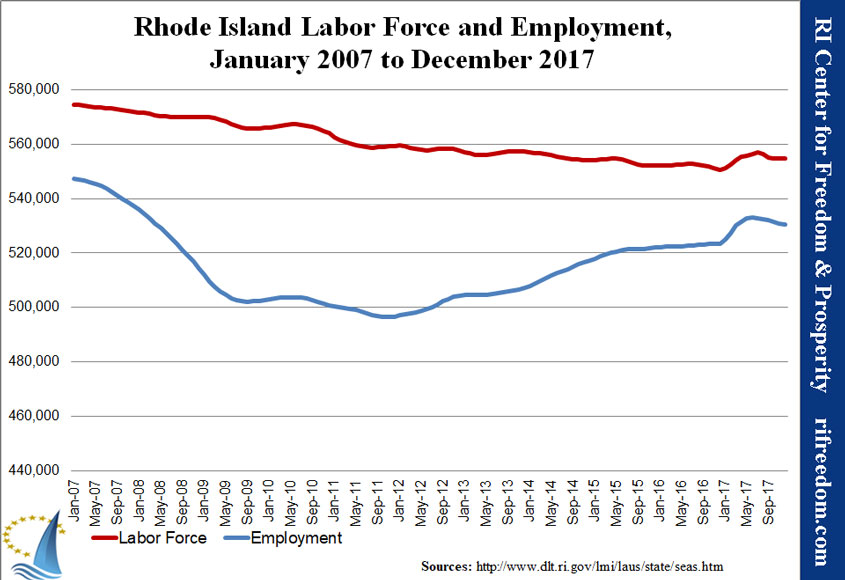
Because of the way the unemployment rate is calculated, a growing labor force can also make the unemployment rate go up, because there are more people looking for jobs. However, the following chart shows how the unemployment rate would have changed if the labor force had stayed the same since January 2007, and it still shows an increase. Under those circumstances, the unemployment rate would now be 7.7%
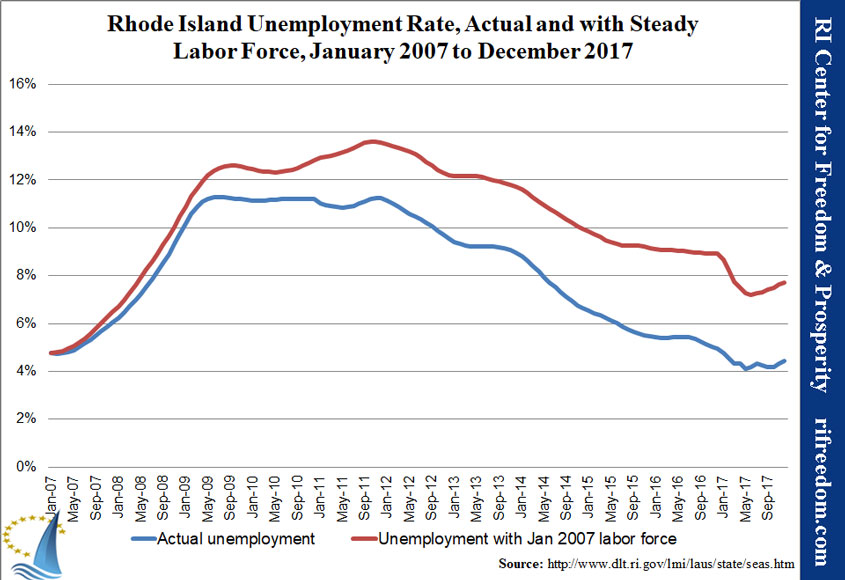
Massachusetts had the opposite experience, with labor force shrinking and employment growing, while Connecticut saw decreases in both. In either case, the Ocean State isn’t about to catch up.
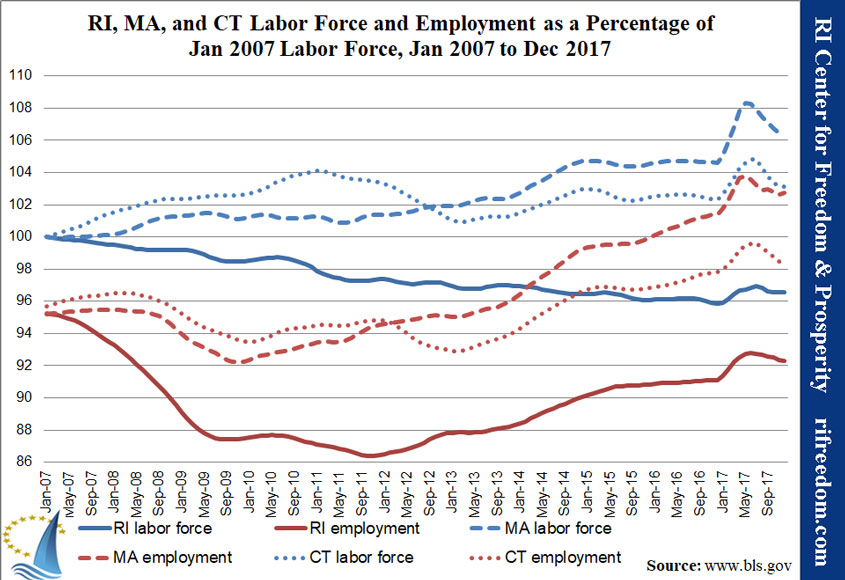
Similar bad news can be seen in the national chart of all states’ recovery of pre-recession employment. The other states at the back of the national pack made gains, compared with Rhode Island’s decrease, leaving us second worst in the country, ahead of only West Virginia, which is languishing under the troubles of the coal industry.
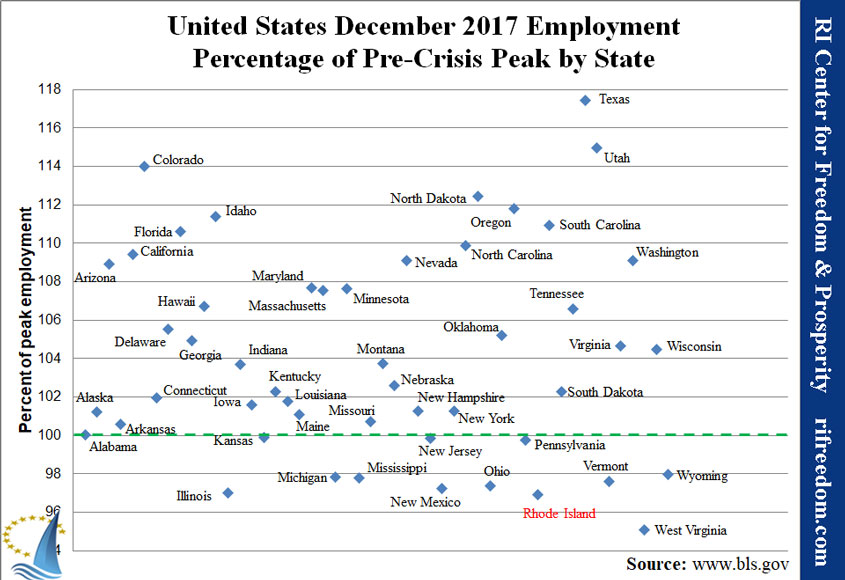
The final chart shows that, once again, Rhode Island is the last state in New England according to the RI Center for Freedom & Prosperity’s Jobs & Opportunity Index (JOI). The index is intended to be a broader measure of the economy than the employment data, taking into account not only employment and jobs, but also welfare enrollment, income, and taxes. Unlike the unemployment rate, which can go up even when something positive happens (more people looking for work), JOI is designed so that the upward and downward motion of each data source has the effect on the index that one would expect.
